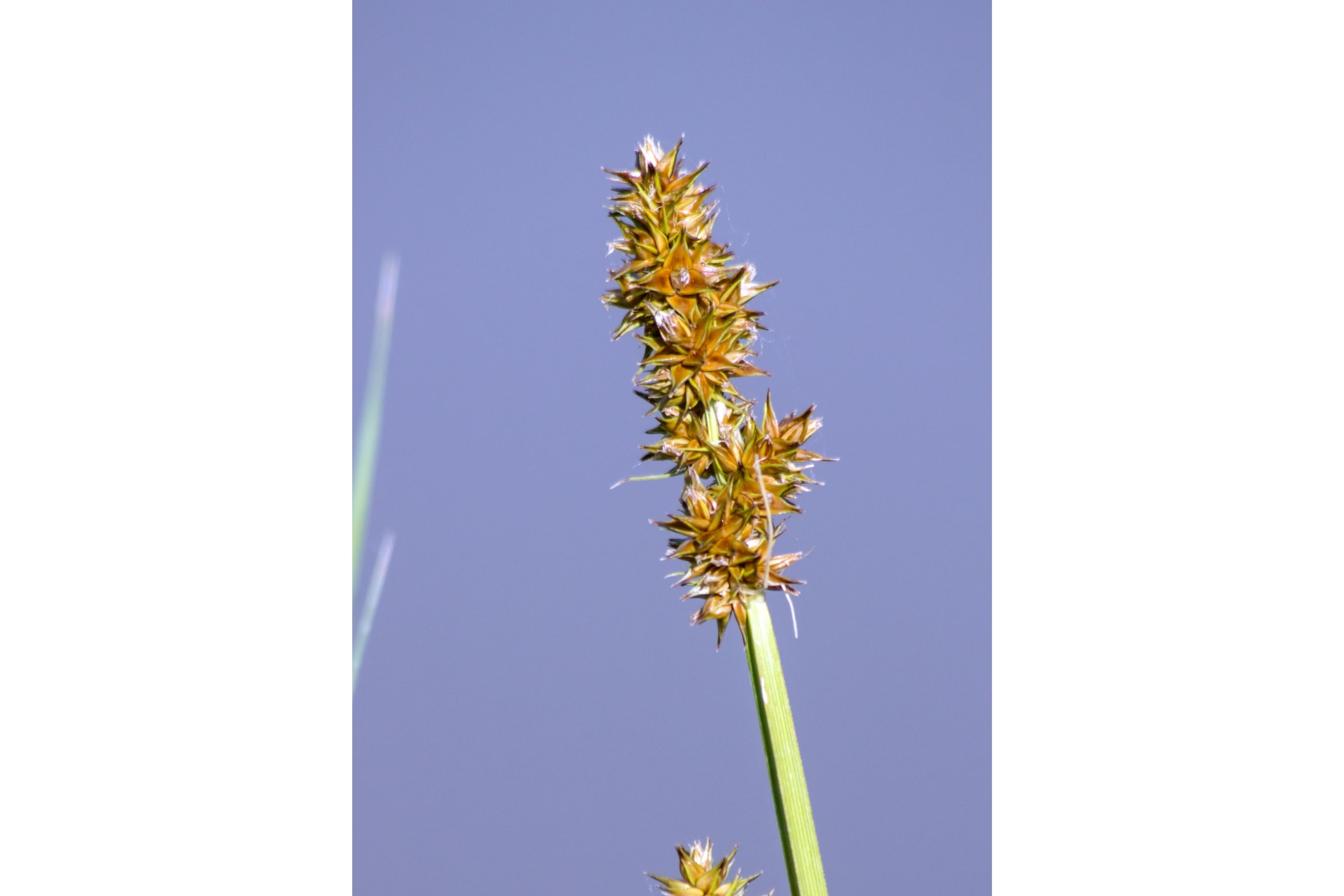Eastern Star Sedge
(Carex digitalis)

Description
Carex digitalis, commonly known as Eastern Star Sedge, is a captivating perennial plant that belongs to the Carex genus within the family Cyperaceae. With its unique features and widespread distribution, C. digitalis has captured the attention of plant enthusiasts, ecologists, and gardeners alike. This article explores the various aspects of C. digitalis, including its taxonomy, morphology, habitat, cultivation, and ecological significance. Taxonomy and Nomenclature The scientific name Carex digitalis is derived from the Latin word "carex," meaning sedge, and "digitalis," referring to its resemblance to the foxglove (Digitalis purpurea). C. digitalis was first described by William Baldwin, a renowned American botanist, in 1789. Morphology Carex digitalis exhibits a distinctive growth pattern with a tufted habit, typically reaching heights of 60-90 cm (2-3 feet). The plant consists of dense clusters of slender, dark green leaves arising from the base. The leaves are elongated, narrow, and grass-like, measuring around 30-70 cm (12-28 inches) in length and 3-7 mm (0.12-0.28 inches) in width. The edges of the leaves are rough and finely toothed. The flowering stems of C. digitalis are erect, slender, and triangular in shape. Rising above the foliage, they bear compact clusters of flowers known as inflorescences. These inflorescences, known as spikes, are arranged in a distinctive branched pattern called a panicle. Each spikelet within the panicle contains separate male and female flowers. The male flowers possess yellow-green stamens, while the female flowers have green, bottle-shaped structures known as perigynia. Habitat and Distribution Eastern Star Sedge is native to eastern and central North America, spanning from Manitoba and Ontario in Canada, southward to Florida and Texas in the United States. Within its natural range, C. digitalis thrives in a variety of habitats, including moist woodlands, open meadows, prairies, and savannas. It tends to favor areas with rich, loamy soil and moderate to full shade. However, it can also tolerate partial sun and various soil types, such as clay or sandy soils. Cultivation Carex digitalis offers numerous horticultural opportunities and can be cultivated in gardens, naturalistic landscapes, and restoration projects. Its elegant form and ability to adapt to diverse growing conditions make it a popular choice for gardeners seeking to add textural interest to their plantings. To successfully cultivate C. digitalis, it is essential to mimic its native habitat. Plant Eastern Star Sedge in a location that receives partial shade to full shade. The soil should be well-draining, consistently moist, and rich in organic matter. Incorporating compost or leaf mold into the soil before planting can improve its fertility and moisture-retention capacity. Propagation of C. digitalis can be achieved through several methods, including division, seed germination, or transplantation of nursery-grown specimens. Division is the most common and reliable method. It is typically carried out in early spring or fall when the plant is dormant. Carefully lift the clump of C. digitalis, separate it into smaller sections, and replant them at the desired location. Ecological Significance As a native sedge, Carex digitalis plays an essential role in the ecosystems it inhabits. It provides valuable habitat and food sources for various wildlife species. The dense tufts of C. digitalis leaves offer cover and nesting sites for small mammals, birds, and insects. The plant's panicles of flowers serve as a vital nectar source for pollinators, including bees, butterflies, and moths. Furthermore, C. digitalis contributes to soil stabilization and erosion control, thanks to its fibrous root system. The roots penetrate the soil, binding it together and preventing erosion, especially in moist or sloped areas. By anchoring the soil, C. digitalis helps to maintain the integrity of riparian zones, wetlands, and forested areas. In natural communities, C. digitalis often occurs alongside other native plant species, forming diverse plant assemblages. These plant communities support a wide range of organisms and contribute to overall ecosystem health. They enhance biodiversity, provide habitat for wildlife, and contribute to the ecological balance of the region. Conservation efforts are crucial to protect the natural populations of C. digitalis. As with many native plants, habitat loss and fragmentation pose significant threats to its long-term survival. Preservation of its native habitats, including woodlands, wetlands, and prairies, is essential. Additionally, promoting the use of C. digitalis in ecological restoration projects can help enhance and recreate suitable habitats for this species. Conclusion Carex digitalis, the Eastern Star Sedge, is a captivating perennial plant native to eastern and central North America. Its slender, grass-like leaves, unique inflorescences, and adaptability make it a popular choice for gardens and naturalistic landscapes. Beyond its horticultural value, C. digitalis plays a crucial role in supporting wildlife, stabilizing soils, and contributing to ecosystem health. Conservation efforts and the incorporation of C. digitalis in restoration projects are necessary to ensure the preservation and continued appreciation of this remarkable plant species.
Taxonomic tree:







